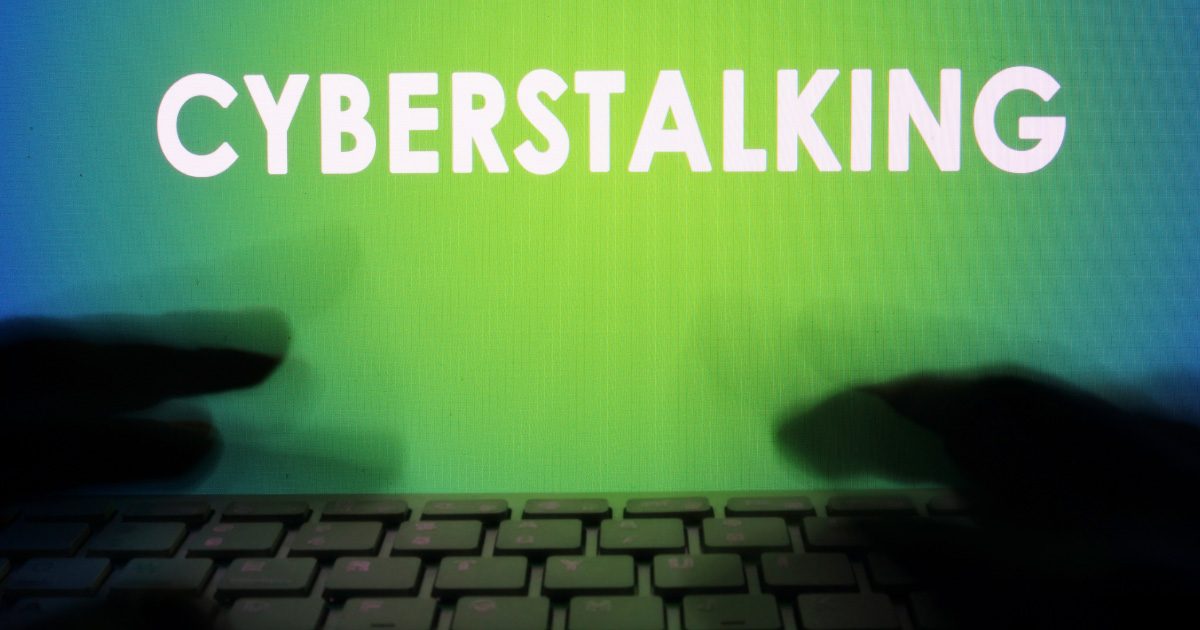Cyberstalking: Definition, Laws, and How to Stay Safe

Cyberstalking is a serious crime with scary statistics. Most people are victimized for an average of two years, which can have serious consequences on your emotional and mental health. Despite cyberstalking affecting nearly 2.5 million Americans each year, it is not discussed as often as other crimes. Understanding what it is and how it is treated in your area can go a long way to keeping you feeling safer and more secure online.
What is Cyberstalking?
Cyberstalking is a relatively new concept, and there has yet to be a universally agreed-upon definition. However, most organizations that specialize in this area have definitions that contain the same elements:
- Stalking is done with the assistance of technology (typically the internet) rather than in person
- It is done to make a person feel afraid, threatened, or worried about their safety
- It invades a person’s privacy
- The stalker monitors the victim’s behavior, threatens them, or makes unwanted advances
- The behavior is unwanted
While stalking can be done by a stranger, most victims know their stalker. Motives for stalking range, but typically include seeking attachment, revenge, or reconciliation from the victim.
Cyberstalkers engage in numerous behaviors, all aimed at making their victims feel embarrassed, harassed, threatened, or afraid. Some of the most popular tactics include:
- Catfishing, or pretending to be someone else online to get close to a victim – often with the goal of obtaining private information or photos
- Doxing, or the act of publishing private information online
- Monitoring their victim’s whereabouts using social media check-ins and location tags
- Hijacking their victim’s webcam
- Viewing metadata on images or other files, including geotags
- Sending unwanted messages
- Hacking online accounts
- Online identity theft
- Flaming, or slandering the person online
Cyberstalking Legislation
In the United States, cyberstalking is a criminal offence. Slander, harassment, and anti-stalking legislation laws govern cyberstalking to some degree. In addition, it is covered in the Violence Against Women Act and other federal acts. Unfortunately, these pieces of legislation do not adequately address all instances of cyberstalking, leaving it to state legislators to enact protective laws. California lead the way in 1999 with the first anti-cyberstalking law passed at the state level. Since then, 13 other states have followed suit:
- Using an electronic device, computer, or email communication to harass a person is prohibited under laws enacted by New York, New Hampsire, Illinois, Hawaii, Connecticut, Arizona, and Alabama
- Messages sent electronically are covered by anti-stalking laws in California, Wyoming, Oklahoma, Florida, and Alaska, with Florida strengthening this legislation to include an outright ban on cyberstalking in 2003
- Stalking through electronic means is banned in Texas
- Stalking and harassment using electronic means as well as cyberbullying are banned in Missouri
In jurisdictions without specific cyberstalking laws, the act itself may still be prohibited through anti-harassment legislation.
How to Protect Yourself
Cyberstalking can happen to anyone at any time. Since most victims already know their stalker, it is never too early to review your online behavior to mitigate your risks and keep yourself protected.
- Review your privacy settings on all accounts, including social media and email
- Turn off geotagging and location sharing on all devices
- Never use a location tag feature, like Facebook’s “check in” option, when uploading photos
- Set strong passwords and never use the same password twice
- Google yourself to see how much information is available, and take steps to limit anything private
- Use a VPN whenever you are browsing online, especially when using public Wi-Fi networks
What to Do if You Are a Victim
If you are a victim, the first thing you should do is contact police as well as victim services. Gather together your evidence, including screencaps, email printouts, and anything else that your stalker may have sent you along with timestamps and any other details you can provide. While police may not have dealt with cybercrimes well in the past, a growing number of departments have officers who specialize in this area.
You should also immediately change all passwords and enable two-step authentication on all accounts. Monitor your online activity as well as your email accounts for the next few weeks, making notes of any suspicious activity.
Cyberstalking is a terrifying crime; one that anyone can fall victim to. Learning more about it, and following the tips above, is the best way to keep yourself safe and secure while browsing online.
